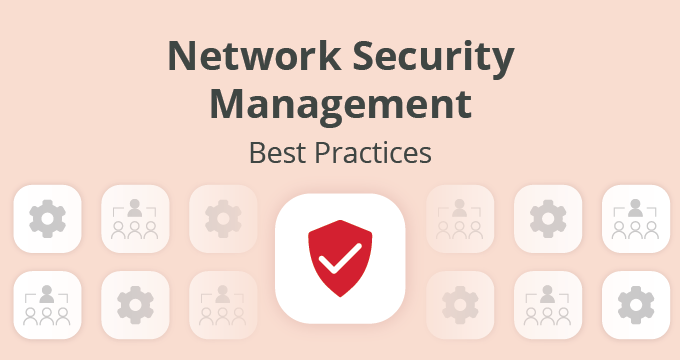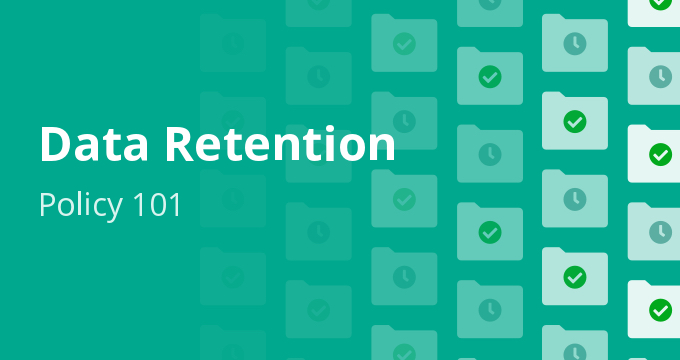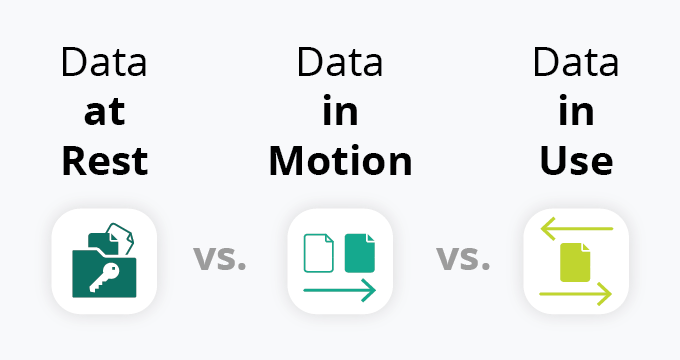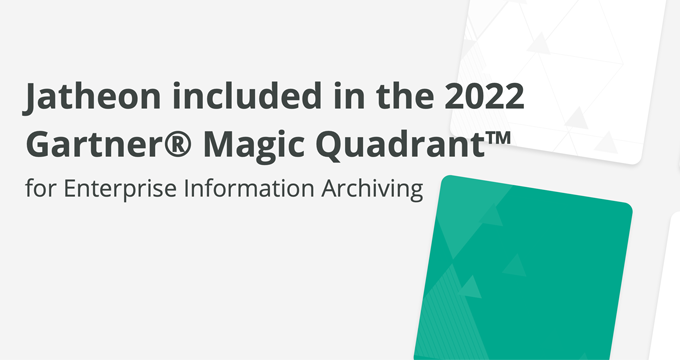In the ever-evolving landscape of cybersecurity, the significance of network security management can’t be overstated.
Since the number of threats keeps increasing and data breaches become more common every year, you should treat managing network security as your top priority.
In this article, we take a look at 10 network security management best practices that will fortify your organization’s cybersecurity.
- Adopt a formal information security governance framework
- Implement data loss prevention
- Perform regular data backups
- Watch out for social engineering attacks
- Educate your employees
- Onboard new employees and third-party users
- Keep your software up to date
- Build an incident response plan
- Perform regular network audits
- Implement PCAP
Now let’s look into each of these best practices in more detail:
1. Adopt a Formal Information Security Governance Framework
Implementing an information security governance framework plays a crucial role in ensuring good network security.
While having a top-notch cybersecurity tool stack is also a must, this framework will help your team learn how to identify, investigate, and respond proactively to attacks.
But what exactly is information security governance?
It refers to how your organization implements and manages a cyber security strategy. It outlines security procedures, protocols, and policies, and makes sure your organization manages information in an industry-compliant way.
For example, companies need to create secure, industry-compliant data retention policies and archive all of their email communications in a format that can’t be modified, but is fully searchable.
Information security governance regulates all this and helps you stay on top of the latest data protection and compliance laws.
2. Implement Data Loss Prevention
Trusting your employees is great, but it isn’t a network security best practice nor is it a strategy. isn’t one of them.
The truth is that almost 20% of data breaches involve internal factors, including employee breaches.
That’s why it’s crucial to implement data loss prevention (DLP) software, whose purpose is to monitor your network and spot whether an employee violates sensitive data security policies by transferring it to an unsafe system or creating an unauthorized copy.
This way, you can prevent both accidental and malicious leaks, as the DLP can be used to control who has access to confidential data and monitor the activity of your employees, vendors, and contractors.
3. Perform Regular Data Backups
Businesses collect, produce, and store massive amounts of data, and losing any of these could have a crippling effect.
It’s not only about losing crucial data. You can also get hefty fines and penalties for non-compliance if it turns out during an audit that some data is missing.
Backing up your data regularly is one of the network security best practices as it protects you from data loss.
It allows you to rest easy as you can be assured that you won’t lose all of your data to accidental deletions, corruption, breaches, or ransomware attacks.
To protect your sensitive company data against any of these incidents, one of the best network security management practices is to create at least three copies of your files.
One copy should be your working copy that’s currently live, the other should be a local backup, inside your facility, a copy that can easily be accessed. The third copy should always be off-site on the cloud or a physical copy that can’t be accessed from your organization.
| Related: Email Archiving vs. Email Backup |
4. Watch Out for Social Engineering Attacks
Social engineering is an intricate tactic used to obtain passwords and access credentials by manipulating individuals.
They rely on psychological exploits rather than technical vulnerabilities in your system. It’s so common that 98% of all cyber attacks rely on social engineering.
It’s precisely because they don’t exploit technical vulnerabilities that they’re so difficult to detect and prevent, as most organizations aren’t equipped to minimize human error.
Hackers exploit these small human errors to divulge sensitive information without your employees even being aware of what’s happening.
While there are no dedicated tools to stop social engineering attacks, there are still steps you can take to prevent them.
- Use email filtering tools
- Implement strong password policies
- Reassess access credentials regularly
- Make multi-factor authentication (MFA) mandatory
- Have regular internal security audits.
- Monitor network traffic
5. Educate Your Employees
Frankly, the most effective network security management practice you can take to prevent social engineering attacks is to educate your employees.
As much as 82% of security breaches are caused by human error, so educating your employees on network security management should be your top priority.
Don’t suppose that everyone knows the basics of cyber security. Instead, organize training sessions where your team will learn more about:
- Creating strong passwords
- What phishing is and what a phishing email looks like
- Potentially dangerous applications and how they work
- Data protection policies, procedures, and regulations
Besides the basics, try to go over other important topics like:
- Incident response plans
- Endpoint security practices
- Remote access guidelines
- Monitoring protocols
- Your current vulnerabilities
- Past incidents
- Employee reporting procedures
Security and threats are ever-evolving and your employees need to be trained and re-trained regularly to prevent any security breaches.
| Related: Phishing Test: Check Your Employees’ Resilience |
6. Onboard New Employees and Third-Party Users
To expand on the human side of network security management, you’re probably constantly having an influx of new people in your organization.
Be it new hires, vendors, contractors, or stakeholders — none of them is aware of how you’re managing network security. This instantly makes them the biggest risk.
You need to take time to create a security-focused onboarding process and teach the new people everything they need to know.
This way, you won’t have to worry about whether they’re aware of all the cyber security risks and policies.
It’s the best practice for network security to test your new hires after the onboarding process and keep a closer eye on how they work with technology in the first few months.
In addition to that, include relevant procedures and policies clearly stating everyone’s responsibilities in employment contracts. Ensuring you’re all on the same page regarding IT security practices is essential for keeping your organization safe.
7. Keep Your Software Up to Date
One of the biggest mistakes you can make is not updating your software regularly.
Don’t forget that cybercriminals are always looking to identify system vulnerabilities and inventing new ways and tools that will allow them to break into companies’ networks.
Software updates are there for a reason. Each new update makes it harder for hackers to get into your systems.
By installing security patches and updating your software regularly, you’ll keep these threats at bay.
It’s always a good network management practice to keep an eye on all the news about the software you are using and its community as you might learn about a new vulnerability and have time to act.
8. Build an Incident Response Plan
Even if you’ve taken all the security measures we’ve discussed so far, you can still suffer a system breach.
To prevent the worst-case scenario, it’s important to have an incident response plan ready in advance.
This will allow you and your employees to act quickly, mitigate the potential consequences of the breach, and start the recovery procedures right away.
Here’s an example plan:
- Verify that the security incident is a data breach.
- Identify the affected systems and parties.
- Isolate affected systems to prevent further issues.
- Shut down all the affected systems.
- Inform all the stakeholders about the problem.
- Working with the legal team to comply with regulations.
- Conduct thorough research on what was affected, lost, and how it happened.
- Recover the data from a copy server.
- Document the breach and upgrade security measures.
This is only one example of an incident response plan and yours could be very different depending on the data you’re working with.
9. Perform Regular Network Audits
Even with years of network security management implementations, you can never be 100% sure you’re safe, especially with how data breaches are evolving.
Conduct routine security audits to identify and address vulnerabilities in your systems and processes.
These security checkups can even be performed by an external company that specializes in finding vulnerabilities in other organizations.
10. Implement PCAP
Packet capture (PCAP) intercepts data packets as they move through your network and temporarily stores them for analysis.
Analyzing these packets can help you diagnose network problems and determine which paths your packets are taking or if they were intercepted by a third party.
Knowing the path they took can tell you a lot about how well your organization is taking security measures and who can see your information.
This is especially important when auditing your security or implementing new measures based on your current state.
Conclusion
Should organizations be concerned with internal security threats? Absolutely!
Both internal and external security threats can be extremely expensive, both in terms of money and the reputation of your company.
That’s why you should implement these best practices for network security management and stay compliant with your industry’s latest data security regulations and protocols.
But security doesn’t stop on the network side, you also need to think about your communication security and compliance.
Implementing a cloud archiving solution is the best decision you can make to keep your organization compliant with all data retention laws.
Stay compliant with all data retention regulations with Jatheon’s cloud archiving solution allowing you to archive all communication, perform ediscovery, and protect your data.
FAQ
What are the 5 types of network security?
Firewall (controls incoming and outgoing traffic), VPN (provides remote and secure access to a network), IPS (prevents brute force attacks like DDoS), network segmentation (defines boundaries between different network segments), and ZTNA (provides users with only the needed access for their action).
What does a network security manager do?
A network security manager implements strategies to safeguard a company’s computer networks from cyber attacks. They specialize in monitoring, analyzing, and enhancing security measures to allow for uninterrupted work while protecting the company’s data.
What are the 3 elements of network security?
Confidentiality protects a company’s data from unauthorized access, integrity ensures that the data being worked with is accurate, and availability ensures the data is present and accessible when needed to be worked with.
What is the weakest part of cyber security?
The human element is the weakest part of cybersecurity as it’s the most unpredictable and left to chance. Human error, negligence, and malicious activities are the biggest cause of data breaches meaning that every company needs to work on educating their employees.
Read Next:What Is Data Archiving: Definition, Benefits, and Best Practices Top 8 Cloud Security Trends To Follow The Importance of Email Archiving – 18 Reasons to Archive Email |








